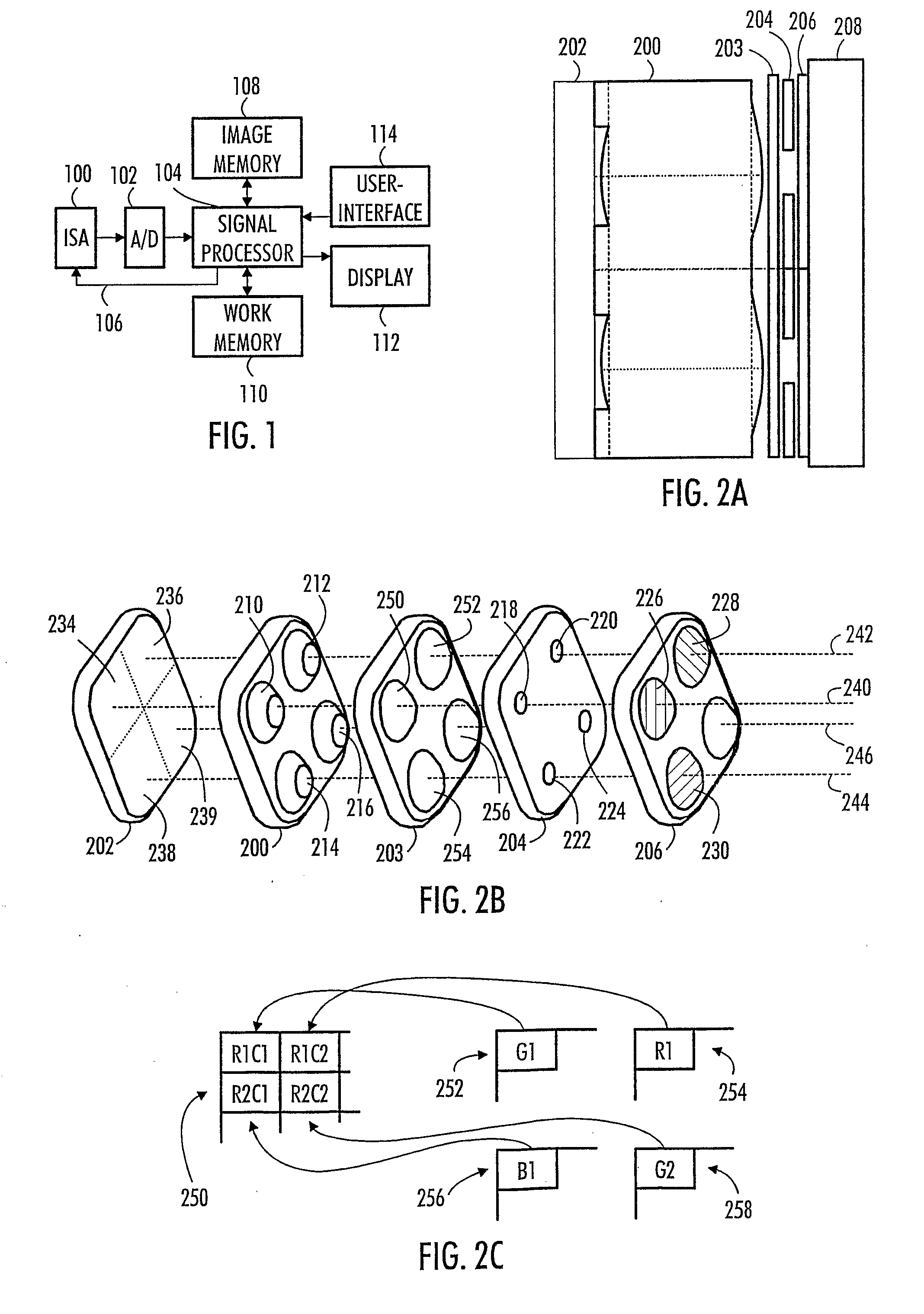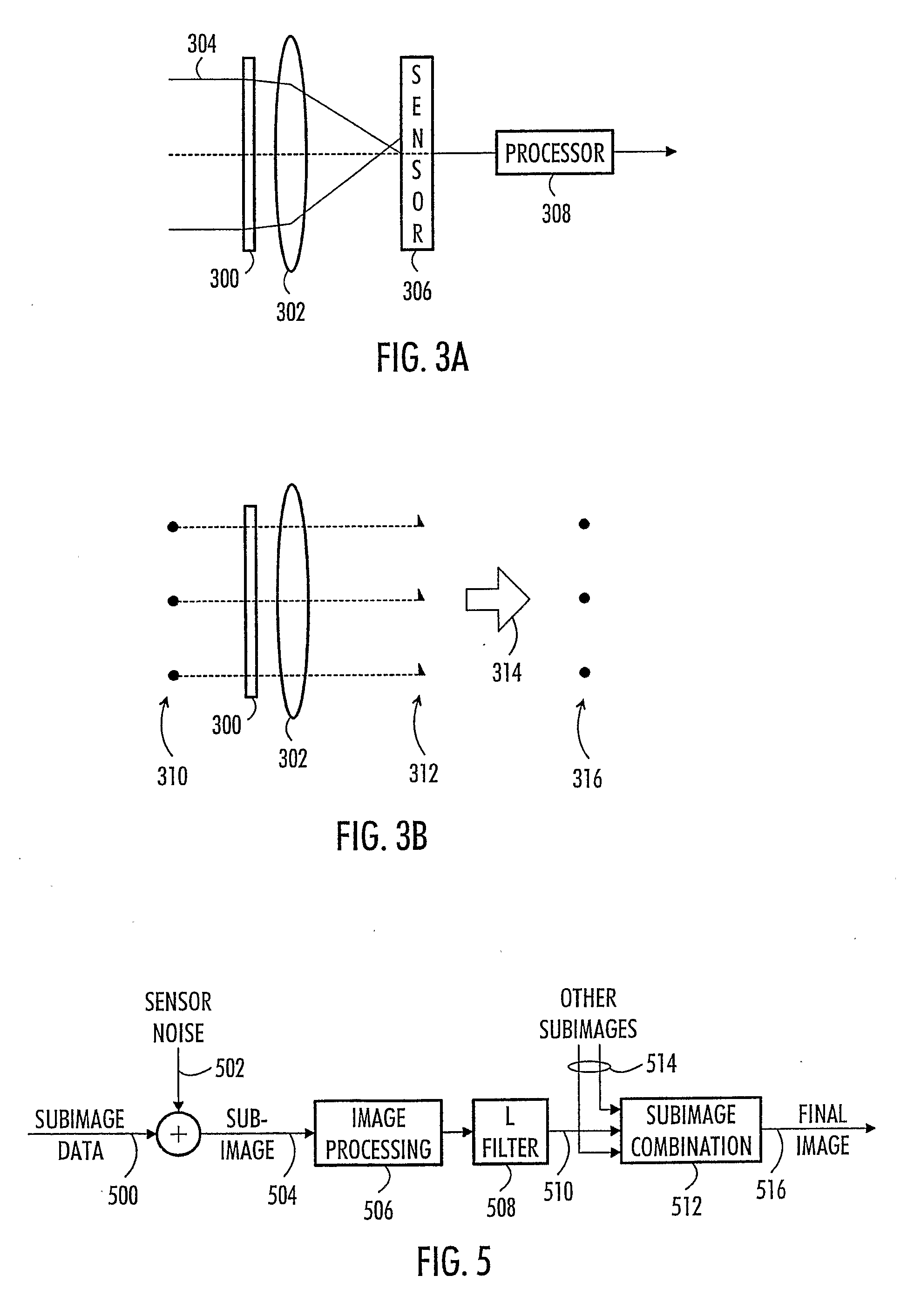Method of Creating Colour Image, Imaging Device and Imaging Module
a colour image and imaging device technology, applied in the field of colour images, can solve the problems of difficult to evaluate the correct parameters to be used in photographing, difficult to implement a focusing mechanism in the lenslet camera, and high manufacturing precision of the lenslet system, so as to avoid the requirement of precision in manufacturing, efficient use, and fast manufacturing
- Summary
- Abstract
- Description
- Claims
- Application Information
AI Technical Summary
Benefits of technology
Problems solved by technology
Method used
Image
Examples
Embodiment Construction
[0021]FIG. 1 illustrates a generalised digital image device which may be utilized in some embodiments of the invention. It should be noted that embodiments of the invention may also be utilised in digital cameras different from the apparatus of FIG. 1, which is just an example of a possible structure.
[0022] The apparatus of FIG. 1 comprises an image sensing arrangement 100. The image sensing arrangement comprises a lens assembly and an image sensor. The structure of the arrangement 100 will be discussed in more detail below. The image sensing arrangement captures an image and converts the captured image into an electrical form. Electric signal produced by the apparatus 100 is led to an A / D converter 102 which converts the analogue signal into a digital form. From the converter the digitised signal is taken to a signal processor 104. The image data is processed in the signal processor to create an image file. An output signal of the image sensing arrangement 100 contains raw image d...
PUM
 Login to View More
Login to View More Abstract
Description
Claims
Application Information
 Login to View More
Login to View More - R&D
- Intellectual Property
- Life Sciences
- Materials
- Tech Scout
- Unparalleled Data Quality
- Higher Quality Content
- 60% Fewer Hallucinations
Browse by: Latest US Patents, China's latest patents, Technical Efficacy Thesaurus, Application Domain, Technology Topic, Popular Technical Reports.
© 2025 PatSnap. All rights reserved.Legal|Privacy policy|Modern Slavery Act Transparency Statement|Sitemap|About US| Contact US: help@patsnap.com



